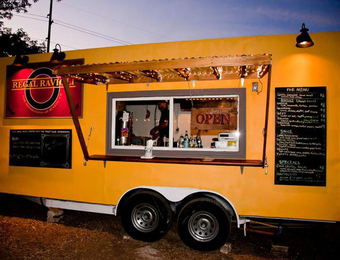
25% of restaurants fail in the first year. By year 3, that number jumps to 60%.
That is a lot of investment in time, capital, and people. It's a big number but the truth is that most business start-ups fail. To offset that risk, software companies prototype a basic version of the product and put it in front of potential customers. Physical product manufacturers also prototype their ideas before spending money on full production.
Food trailers have been popular in urban areas for a number of years, and when they became well known, some of them transitioned into traditional retail locations.
Why can't that be part of the business plan
Food trucks have low overheard, they can change locations, they have great access to customer feedback, and they have the ability to iterate their products quickly.
So, the first thing you do is park it at the busiest spot you can find and perfect the menu.
Once you are convinced that you have a product people want, phase 2 is to find the right brick and mortar location.
You do that by identifying 3 or 4 locations where you think it would work, and park the trailer in front of each for a week or 2.
Then run the numbers. How many people in that location risked changing their eating habits? How many came back? How many brought friend? All these factors play into reducing risk…
The best part is, while you are building out the restaurant, you can continue to run the trailer in the location building a customer base and getting people excited about the pending opening…
That is a lot of investment in time, capital, and people. It's a big number but the truth is that most business start-ups fail. To offset that risk, software companies prototype a basic version of the product and put it in front of potential customers. Physical product manufacturers also prototype their ideas before spending money on full production.
Food trailers have been popular in urban areas for a number of years, and when they became well known, some of them transitioned into traditional retail locations.
Why can't that be part of the business plan
Food trucks have low overheard, they can change locations, they have great access to customer feedback, and they have the ability to iterate their products quickly.
So, the first thing you do is park it at the busiest spot you can find and perfect the menu.
Once you are convinced that you have a product people want, phase 2 is to find the right brick and mortar location.
You do that by identifying 3 or 4 locations where you think it would work, and park the trailer in front of each for a week or 2.
Then run the numbers. How many people in that location risked changing their eating habits? How many came back? How many brought friend? All these factors play into reducing risk…
The best part is, while you are building out the restaurant, you can continue to run the trailer in the location building a customer base and getting people excited about the pending opening…
 RSS Feed
RSS Feed
